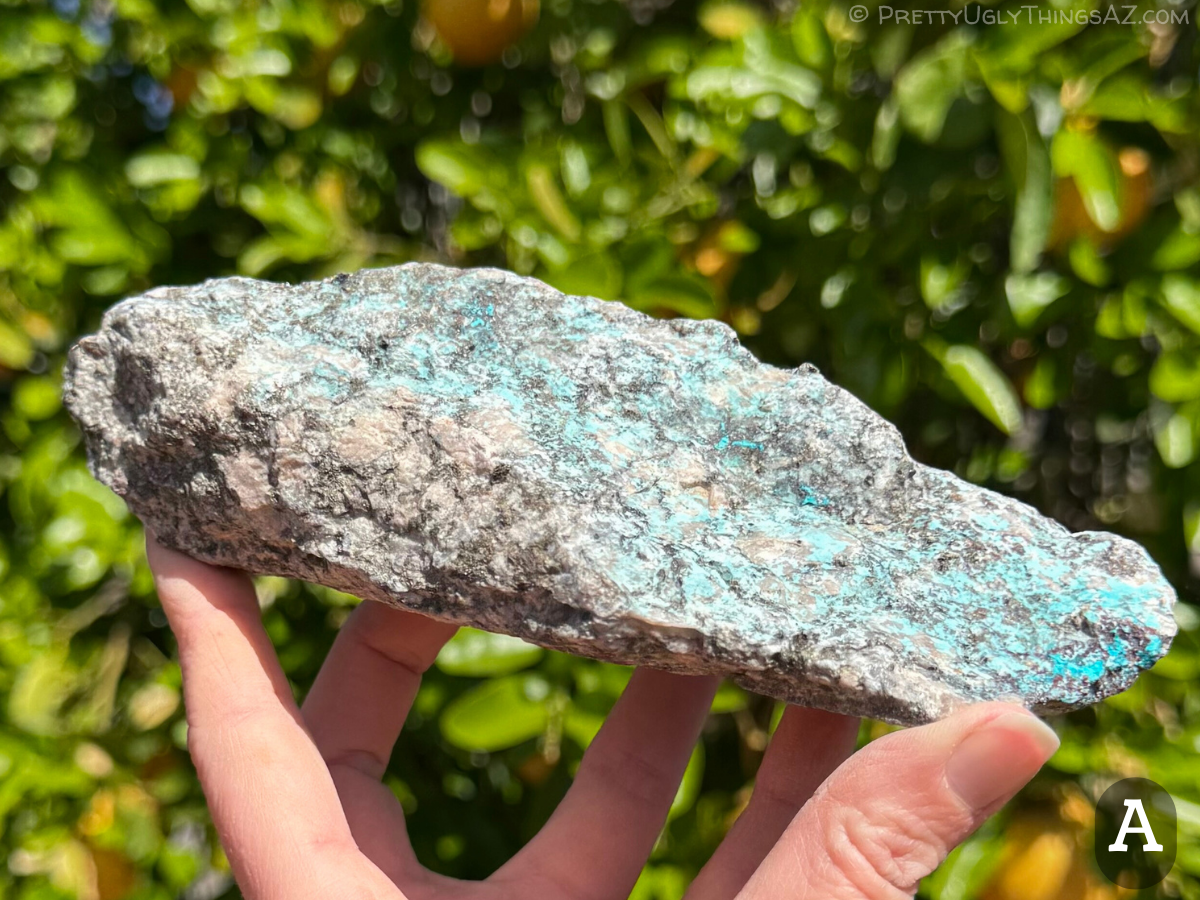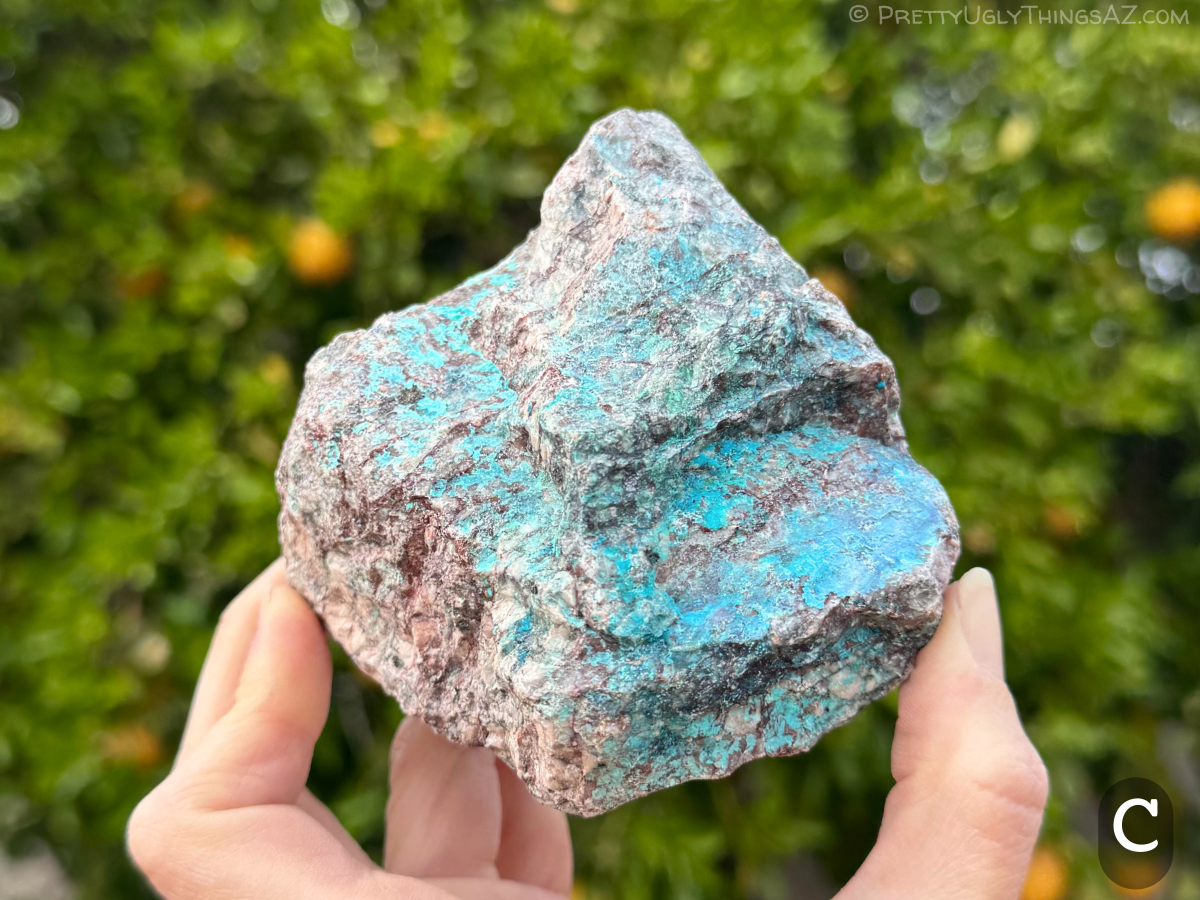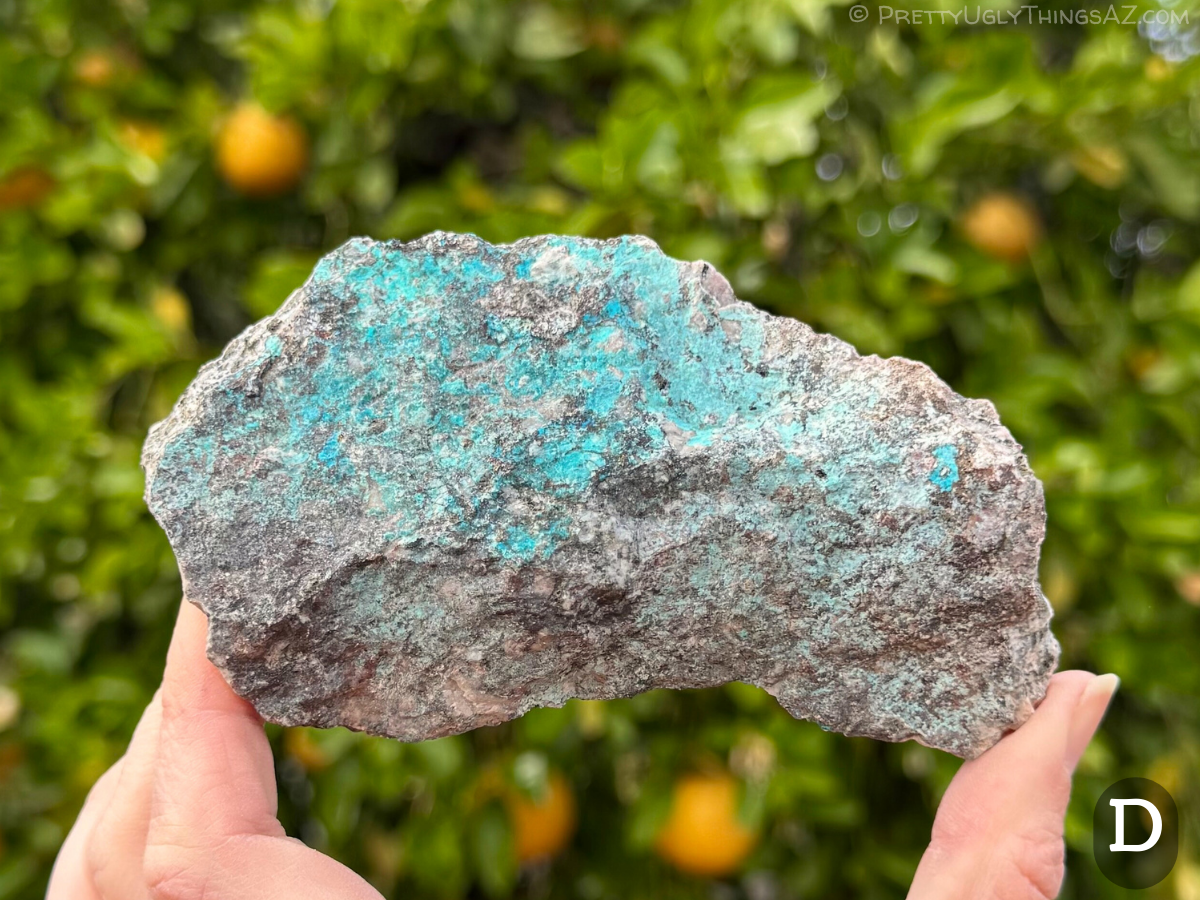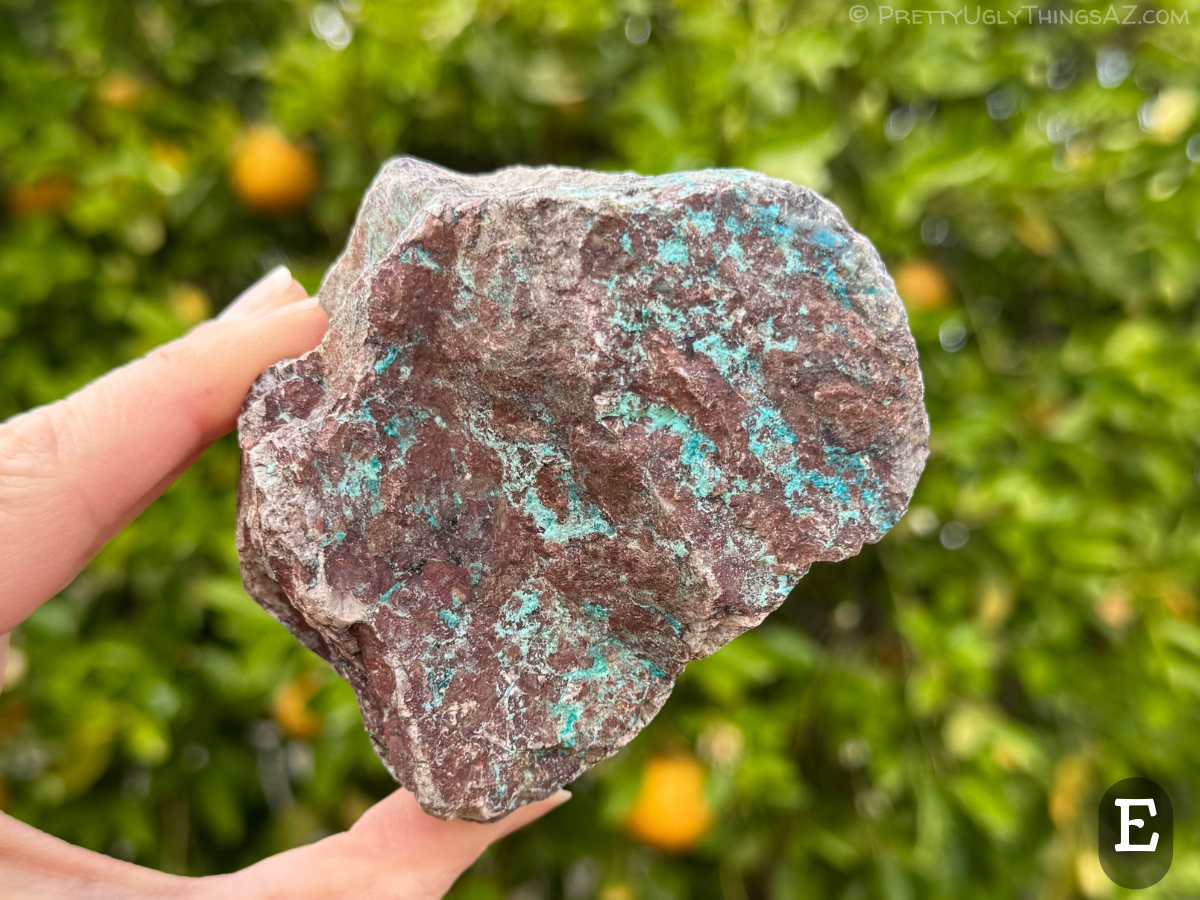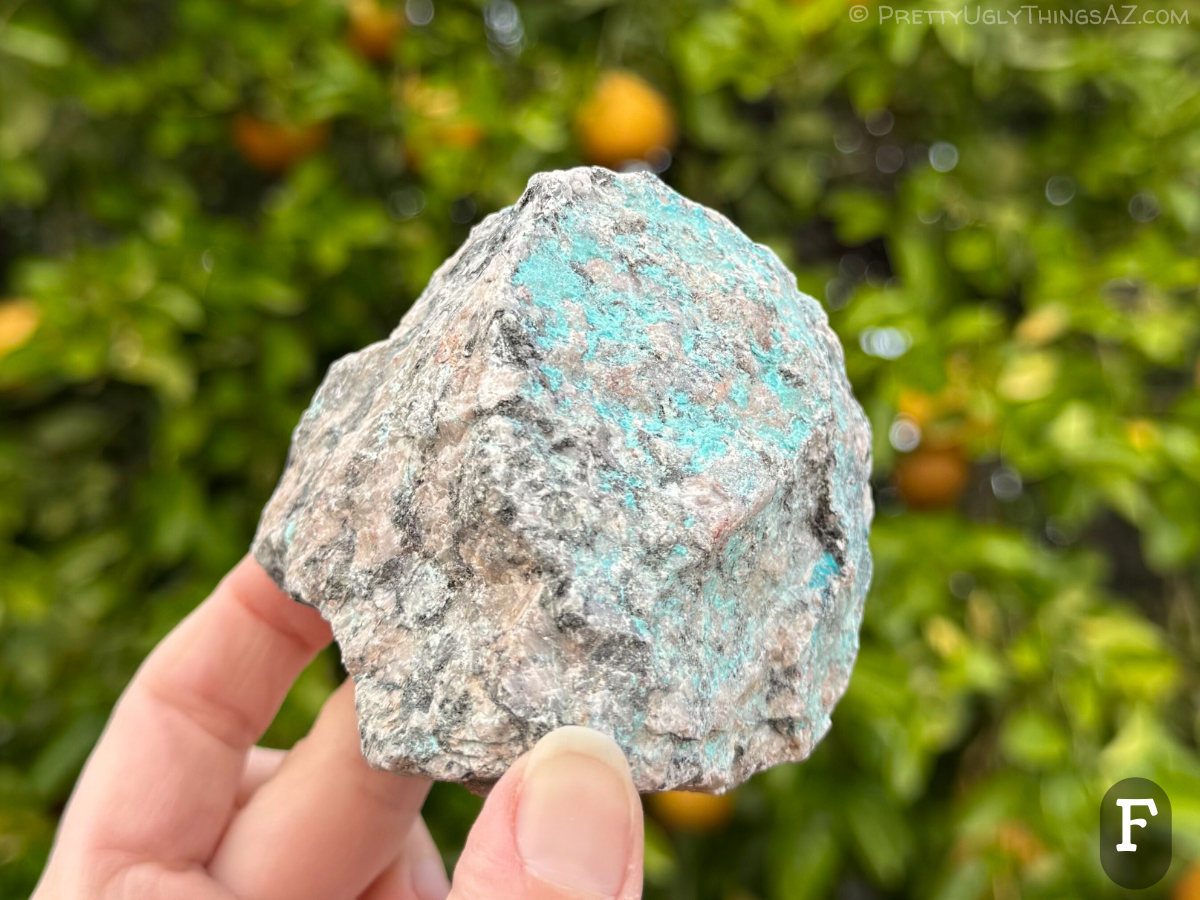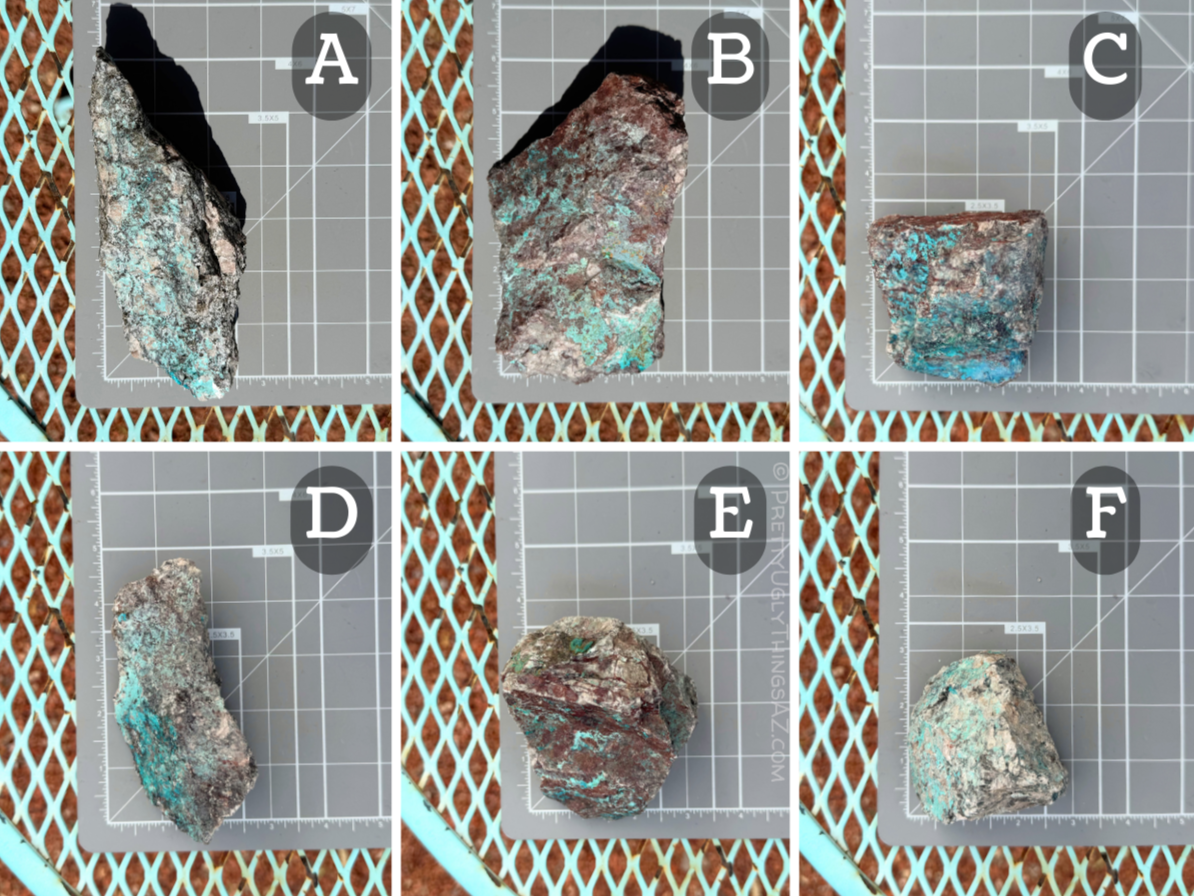Kino Blue decorative rock (small 1/2–1 lb piece)
Kino Blue decorative rock (small 1/2–1 lb piece)
Couldn't load pickup availability
Locale: North of Tucson, Arizona
Approx weight: 1/2–1 lbs
Approx size: 2.5–5"
Kino Blue rock is a beautiful option for natural outdoor decor, adding a southwest color palette around the home or in succulent gardens. It is a colorful granite mined north of Tucson, Arizona, at the site of a former copper mine. The rock's base is a black-and-white pepper-speckled granite with sparkling biotite flecks, and spotted with large light peach-colored feldspar crystals. The material gets its name from the distinctive vibrant blue patches running through it, caused by copper. Brick red and rusty brown tones of iron oxides on the surface can obscure the pattern but provide a striking contrast.
Some of the blue color is caused by weathering of the copper content in the rock, which develops a light green-blue patina with exposure to water and air. This means the surface color can actually improve over time as the material continues to weather, making it an excellent decorative rock for outdoor use. Granite does naturally decompose though, so it is normal for small pieces to crumble off the edges.
Additional copper-based minerals add deeper shades of blue and green to the rock. Chrysocolla is the most common, with a bright turquoise or robin's egg blue color. I have also observed what I suspect to be malachite (deep green), azurite (royal blue), dioptase (emerald green), conichalcite (yellow-green), and chalcopyrite (fool's gold, but can have peacock colors) in the mix. These minerals are amorphous and low-quality, though you may see some details where there are fibrous needles of radial growth or partial spheres.
Option B is priced slightly higher because it is a more mineralogically interesting piece; it is the specimen that has the botryoidal conichalcite detailed in the second image.
⚠️ Kino Blue is especially beautiful in water features since the color and pattern are emphasized when wet, but it is NOT a good decorative rock in aquariums or fish ponds; the high copper content means trace amounts can leach into the water, affecting the health of fish (or other critters). Similarly, Kino is an excellent choice for naturalistic cactus and succulent plantings but could throw off the nutrient balance if you are watering over it, or if it sits in damper soils.
